
The Beauty of Holi: A Blend of Colors and Emotions
Holi is an important festival for Indians and Hindus, second only to Deepavali, and is known as the festival of colors, love, and spring.
It celebrates the eternal and divine love of the deities Radha and Krishna. In addition, the day also symbolizes the victory of good over evil, as it commemorates Vishnu's victory as Narasimha over Hiranyakashipu. Holi originated and is mainly celebrated in India and Nepal on the Indian subcontinent, but has also spread to other parts of Asia and parts of the Western world through the Indian diaspora.
Holi also celebrates the arrival of spring in India and Nepal, the end of winter, and the blossoming of love. It is also a prayer for a good harvest in the spring.
The Origin of Holi
Legend has it that there was a king named Jinchuang who became proud because of his asceticism and obtained an indestructible body. He wanted his subjects to worship only him and did not allow people to believe in the great god Vishnu. His son, Prakharatha, insisted on worshipping the great god. Jinchuang tried to change his son's mind, but after many failures, he decided to kill his son, so he instructed his sister, the demon Hulika, to burn the prince to death. Hulika tricked Prakharatha into sitting in the fire with her, and Hulika had a fireproof cloak. In the fire, the fireproof cloak suddenly flew up and covered Prakharatha, and Hulika was burned to death on the spot and turned into ashes. This was the result of the blessing of the great god Vishnu, so people threw seven colors of water on the prince to celebrate. Vishnu appeared and executed Jinchuang.
Playing tricks on people and having fun are the spirit of Holi. Usually, people of lower castes throw powder and pigments on people of higher castes, temporarily forgetting the class differences. On the second day of Holi, people splash and smear each other with water and various pigments. At night, people throw the images of Holika made of grass and paper into the fire and burn them. Indians also drink a milky cannabis drink called Bhang during Holi, which is said to ensure peace and health in the coming year. In Nepal, the celebration begins with the bamboo pole erection ceremony. The festival lasts for a week, and people throw red powder and water balls at each other. On the eighth day, people burn the bamboo poles and the festival ends. During the festival, people throw colored powder and colored water at each other to celebrate the arrival of spring.
In recent years, many regions around the world have imitated the form of Holi celebrations and held celebrations of the Festival of Colors around the world to promote love and equality.
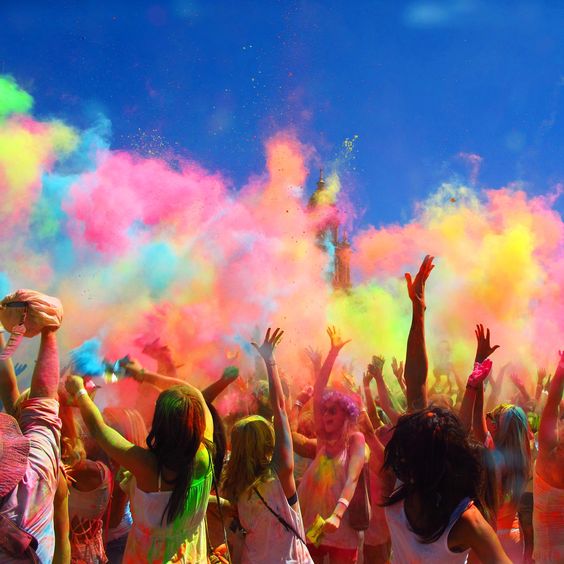 |
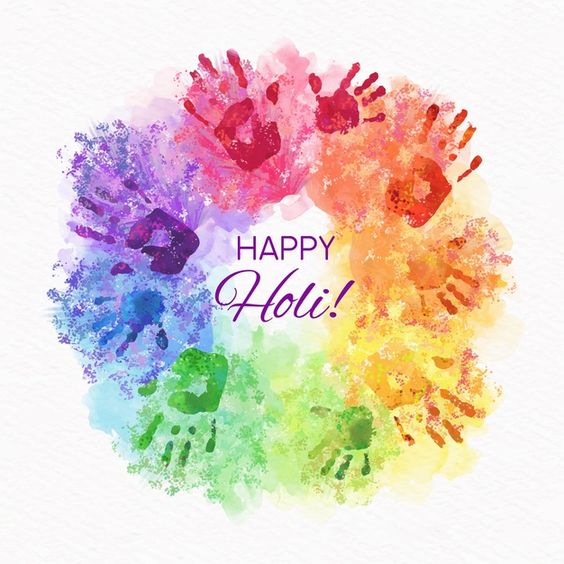 |
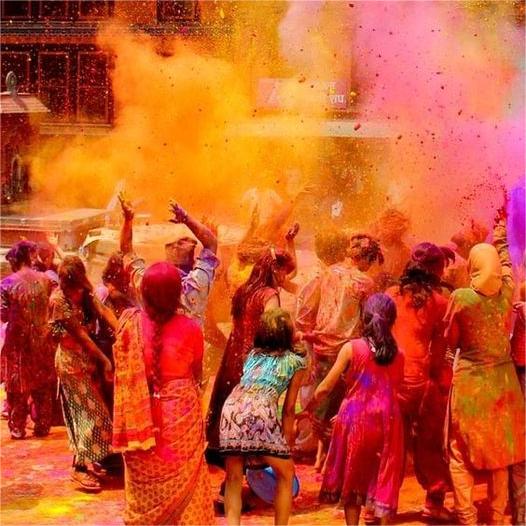 |
Holi celebrations and purpose
Holi has many purposes, most prominently celebrating the beginning of spring. In 17th-century literature, Holi was considered a celebration of agriculture, commemorating the spring harvest and fertile land. Hindus see it as a time to enjoy the rich colors of spring and say goodbye to winter. For many Hindus, Holi marks a time to rebuild broken relationships, end conflicts, and get rid of emotional impurities accumulated in the past. It also has a religious purpose, symbolically reflected in the legend of Holika. On the eve of Holi, bonfires are lit and a ceremony called Holika Dahan or Little Holi is held. People gather around the bonfires, singing and dancing. The next day, people celebrate Holi, called Dhuli in Sanskrit, or Dhulheti, Dhulandi or Dhulendi. In northern India, children and teenagers spray each other with colored powder solutions (gulal) and celebrate with laughter, while adults smear dry colored powder (abir) on each other's faces. Visitors are first teased with colours and then treated to Holi delicacies such as gujia, shakkarpaare, matri and dahi-bada, sweets and drinks. After playing with colours and cleaning, people take a bath, change into clean clothes and visit friends and relatives.
Radha Krishna and Holi
In the Braj region of India, where the Hindu deities Radha and Krishna grew up, people celebrate this festival till Rampanchmi to commemorate their divine love for each other. The festival officially ushers in spring, and Holi is celebrated as a festival of love. Sage Garga’s Garga Samhita is the first literary work to mention the romance of Radha and Krishna playing Holi. There is also a widely circulated symbolic legend behind this festival. When Krishna was young, he was desperate because of his dark skin and wondered if the white-skinned Radha would like him. His mother Yashoda, tired of his despair, asked him to approach Radha and ask her to paint his face any color she wanted. Radha did so, and Radha and Krishna became a couple. Since then, people have marked Holi with playful colors on Radha and Krishna’s faces. Outside of India, these legends help explain the significance of Holi (Phagwah), which is common in some Indo-Caribbean communities, such as Guyana, Suriname, and Trinidad and Tobago. Holi is also celebrated with great enthusiasm in Mauritius, Fiji, and South Africa.
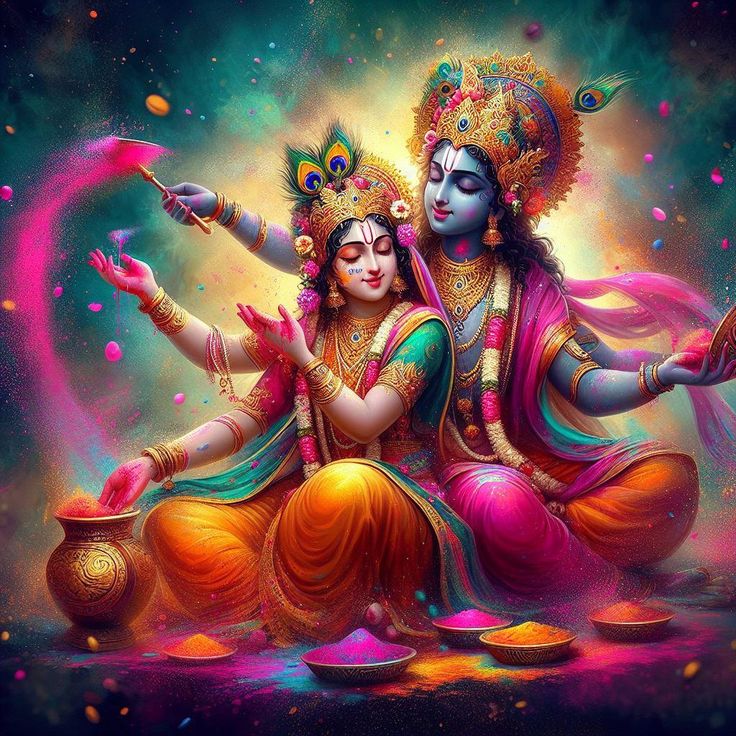 |
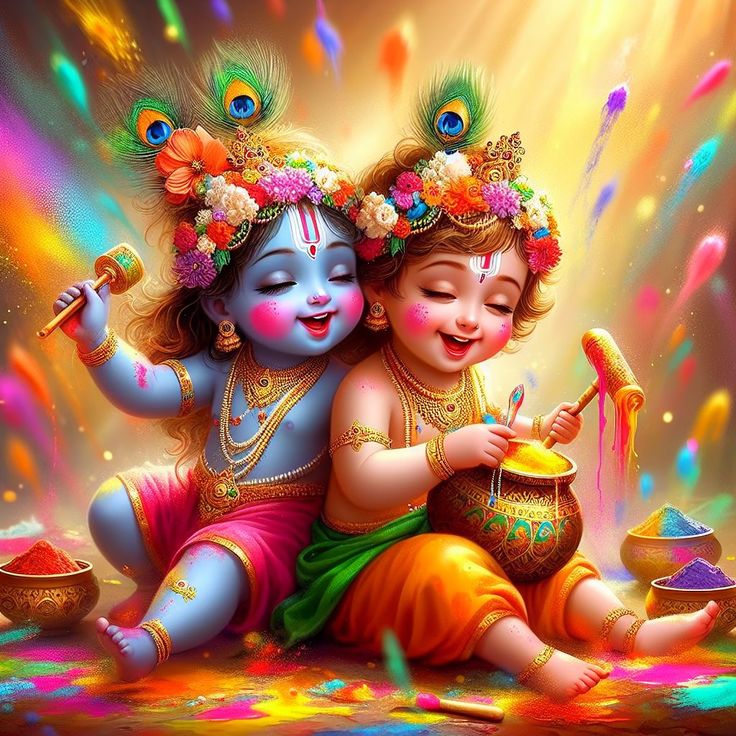 |
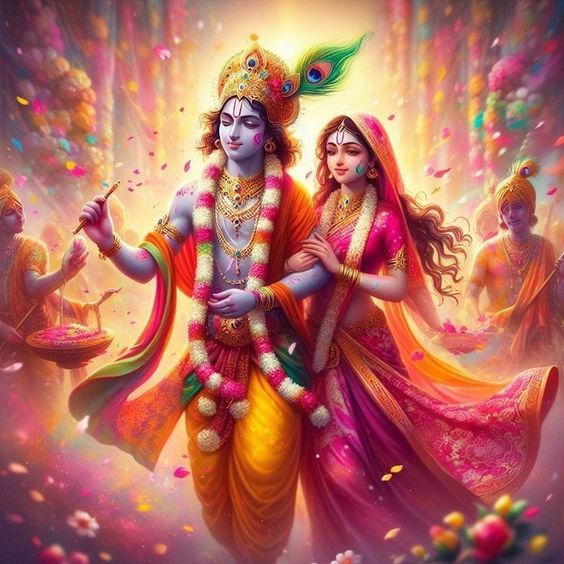 |
The Significance of Holi
Holi has great cultural significance in various Hindu traditions of the Indian subcontinent. It is a festival of closure and letting go of past mistakes, ending conflicts by meeting others, and a day of forgetting and forgiveness. Debts are paid or forgiven, and people reconnect with people in their lives. Holi also marks the beginning of spring, a time for people to enjoy the change of seasons and make new friends.

